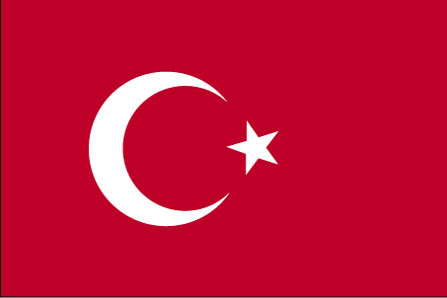To help inspire or plan your trip to Turkey, some of its major attractions
for travellers are shown below, including some of the best natural, historical, cultural and adventure sites in the country.
These include all of UNESCO World Heritage Sites for Turkey which represent the best
of the world's cultural and natural heritage.
Click on the icons below to focus on specific types of features
(click again to return to all).
|
|
|
|
|
|
|
|
|
|
|
|
 |
|---|---|---|---|---|---|---|---|---|---|---|---|
| Natural | History | Wildlife | Trekking | Cities | Religious Monument | Boat Journey | Rail Journey | Diving | Cultural | Adrenaline | UNESCO WHS |
Western Turkey - Religious Monuments
| Istanbul | |
|---|---|
Turkey's most important city spans Europe and Asia across the Bosphorus and has been capital of three empires - Eastern Roman, Byzantine and Ottoman throughout its history (including its previous incarnations as Byzantium and Constantinople). This has left it with an incredibly rich historical heritage that makes it one of the great cities of the world. The Blue Mosque is perhaps the city's most famous sight, built by the Sultan Ahmet I in the 17th century, with a stunningly impressive scale and elegant design. Aya Sophia was built as a Byzantine Christian church in the 6th century, converted to a mosque after the Islamic takeover in the 15th century and now a museum. Its huge dome and walls include some superb mosaics. The 4th century Hippodrome of Constantine was the site of political demonstrations, chariot races and polo matches. Topaki Palace, built in Islamic style, was the home of the Ottoman sultans for four centuries. Other buildings of note include Suleymaniye Mosque, the Kariye Camii church and the ancient ramparts and aqueduct. One of Istanbul's most famous attractions is the vast Grand Bazaar, a labyrinth of some 4000 covered shops, cafés and restaurants, where you can haggle for jewellery, clothes, sweets and spices. UNESCO World Heritage Site: Historic Areas of Istanbul | |
| Konya | |
|---|---|
Konya is Turkey's holiest city and home to the mystic Sufi sect known as the Whirling Dervishes, founded by Mevlana Celaleddin Rumi. Known as Iconium in Roman times, Konya was capital of the Seljuk Turks in the 12th and 13th centuries. The Mevlana Museum contains the tomb of Mevlana and other important leaders of the sect, as well as some of Mevlana's handwritten manuscripts and other artefacts such as ancient carpets and musical instruments. | |
| Cappadocia | |
|---|---|
One of Turkey's most iconic sights is the lunar like landscape of Cappadocia. Formed by wind and water erosion of tuft (soft compacted volcanic ash), the landscape comprises bizarre rock formations shaped like pillars, cones, towers, domes and pyramids, some up to 40 metres high. For centuries man has carved dwellings, churches, troglodyte villages and even entire subterranean cities into these rocks, particularly Byzantine monks and hermits from the 4th century onwards. Many of the rock churches in the Göreme Valley contain richly decorated religious frescoes from the post-iconoclastic period (10th-12th centuries). The underground cities of Kaymakli and Derinkuyu, built by Christians seeking refuge from Arab oppression, are fascinating places to explore with several levels of tunnels extending for many kilometres. UNESCO World Heritage Site: Göreme National Park and the Rock Sites of Cappadocia | |
| Selimiye Mosque, Edirne | |
|---|---|
The Selimiye Mosque was built in the 16th century in the former Ottoman capital of Edirne. Designed by the famous Ottoman architect Sinan, it comprises a single great dome and four slender minarets, as well as madrasas (Islamic schools), a covered market, clock house, outer courtyard and library. It is considered the finest example of an Ottoman külliye, a group of buildings constructed around a mosque and managed as a single institution. UNESCO World Heritage Site: Selimiye Mosque and its Social Complex | |
Eastern Turkey - Religious Monuments
| Mardin | |
|---|---|
The beautiful ancient town of Mardin is renowned for its carved stone architecture, authentic bazaars and picturesque mosques and minarets, all overlooked by the remains of the citadel which offers superb views of the town. The nearby Deyrulzafaran Monastery (or Saffron Monastery) is a Syrian Orthodox monastery that dates back to the 5th century and still holds services in the biblical language of Aramaic. | |
| Great Mosque and Hospital of Divrigi | |
|---|---|
The 13th century Great Mosque of Divrigi was founded by Emir Ahmet Shah, along with a marestan or hospital for the insane endowed by his wife and designed by the same architect. Divrigi is an outstanding example of Selcuk mosques in Anatolia. UNESCO World Heritage Site: Great Mosque and Hospital of Divrigi | |





